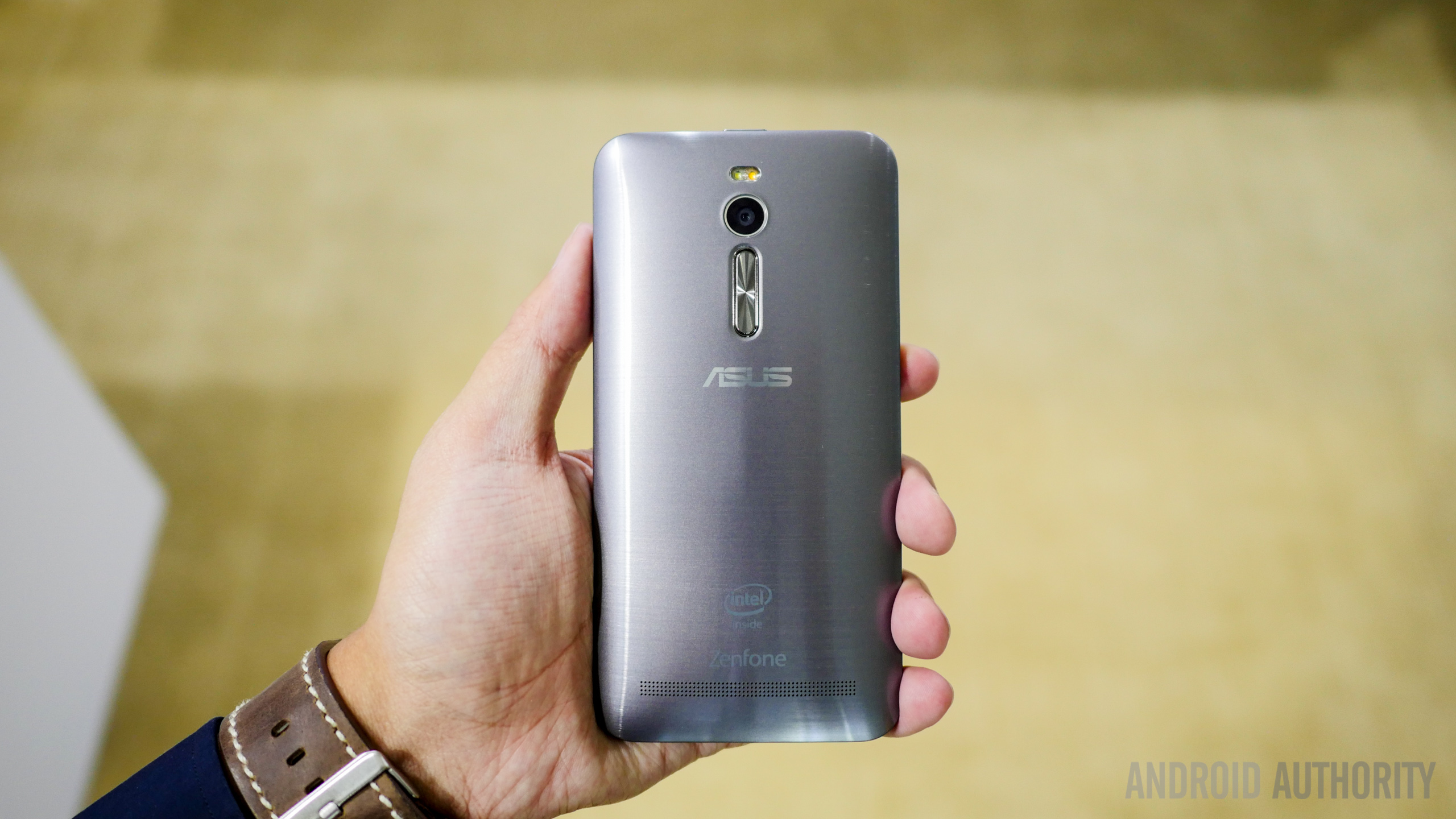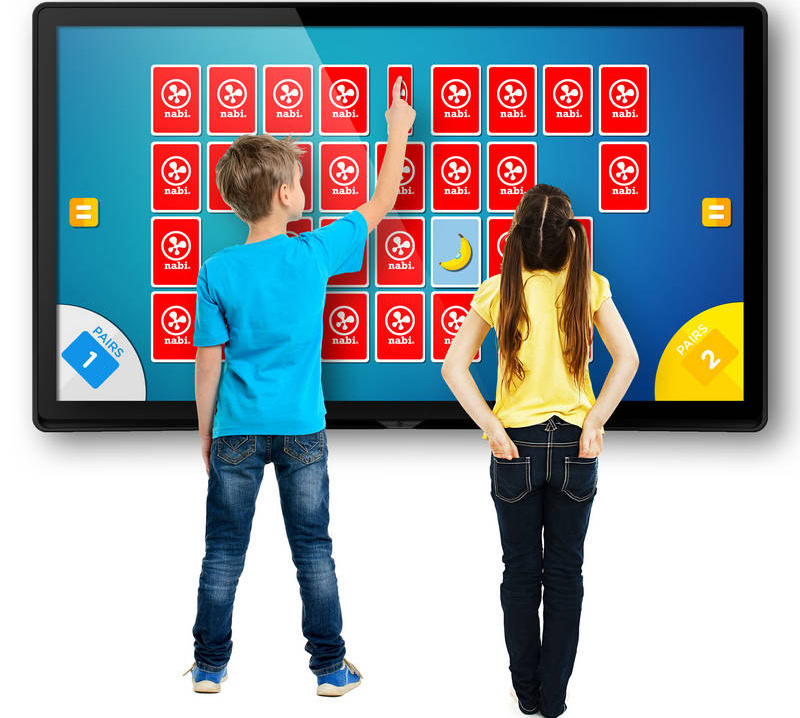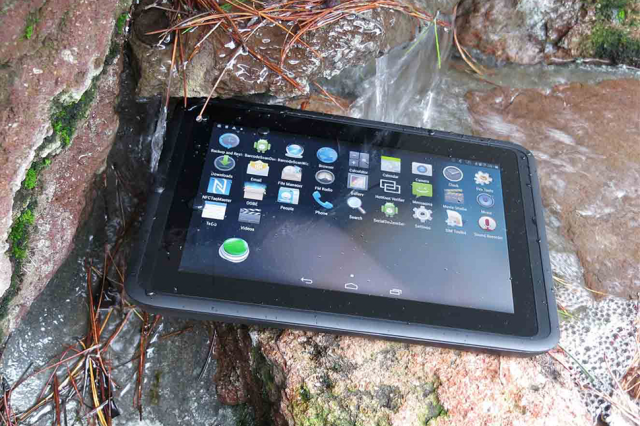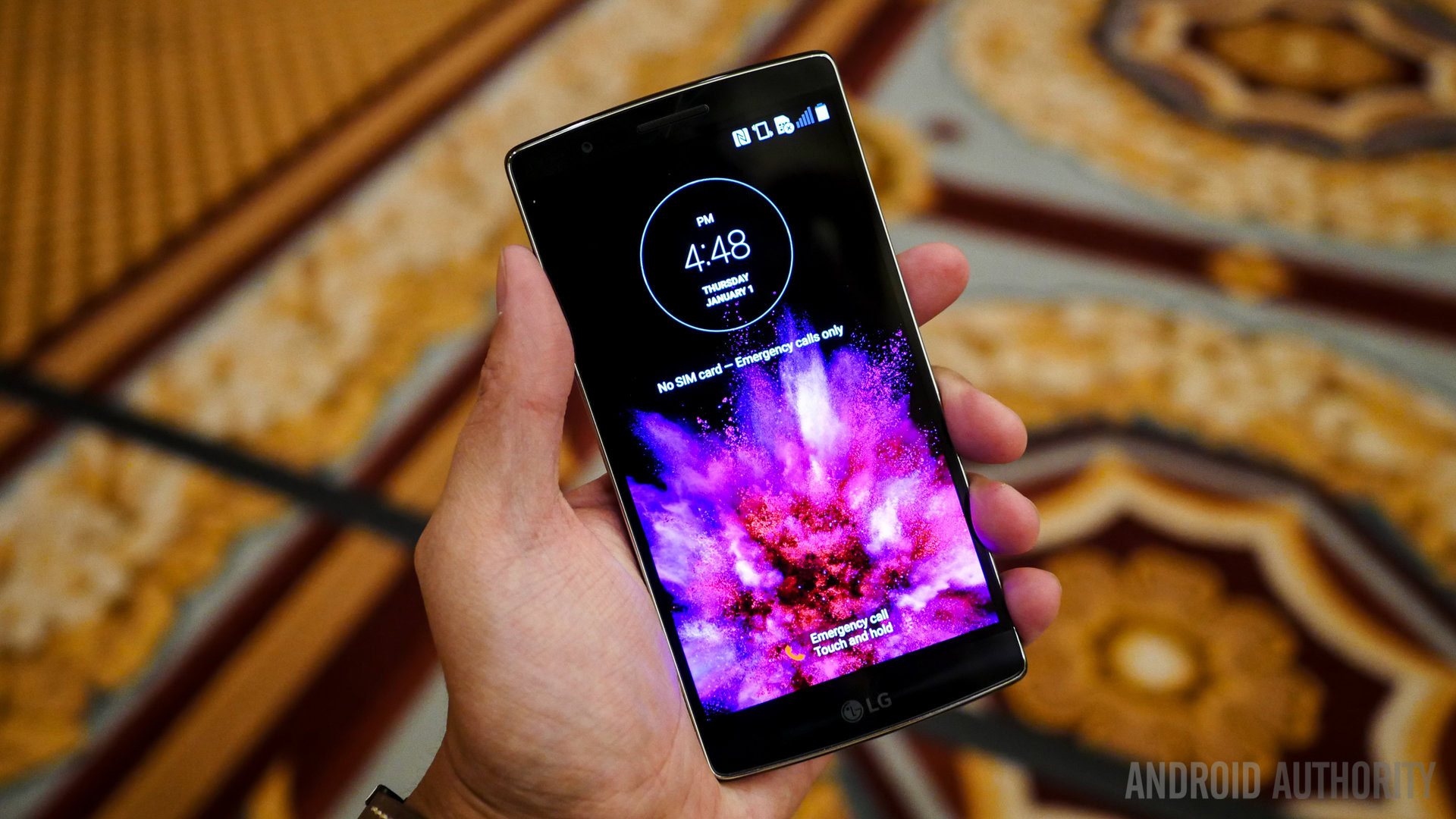Affiliate links on Android Authority may earn us a commission. Learn more.
CES takeaway: smartphones and tablets

If you missed our coverage of CES 2015, that’s okay! As the event is coming to a close, we thought we’d take this time to go through the week’s top stories and roundup the biggest smartphone and tablet announcements we saw at the trade show. There’s a lot to recap here, so let’s jump right in.
LG’s G Flex 2
LG’s early announcement of the G Flex 2 was arguably the biggest announcement of CES 2015. LG’s first G Flex brought a ton of new features to the smartphone world, but it fell short in many critical areas. With the G Flex 2, it seems as though LG stepped up and really made this a device worth buying. It’s 5.5-inch 1080p curved screen, rear-facing 13MP camera and even the super attractive Flamenco Red color make it an overall killer device. What’s more, the G Flex 2 is the first smartphone on the market to tote the Snapdragon 810 processor.
Last year’s G Flex was really difficult to recommend to almost anyone, but this year’s iteration will definitely be one of the most interesting phones of the year, especially for those looking for something a bit more unique when it comes to form factor.
Read more:
The superphone/supercamera hybrid: Panasonic’s Lumix CM1
Panasonic was showing off their Lumix DMC-CM1 smartphone at CES, but it was announced at the tail end of last year. That didn’t seem to bother anyone though, because this camera smartphone can really pull its own weight. The phone itself has a 4.7-inch 1080p display, a Snapdragon 800 processor backed by 2GB of RAM, and it’s running Android 4.4 KitKat. But the phone isn’t the star of the show here, it’s the camera. Panasonic managed to throw on a huge 1-inch sensor, an f2.8 Leica lens and a 20MP sensor that truly makes for an amazing camera experience. To top it all off, there’s a smartphone attached to it? Sign us up.
When the device was originally announced, Panasonic made it very clear that this device was meant solely for the European market. Turns out it’s coming to the US on AT&T and T-Mobile to the tune of roughly $1,000 unlocked. It’s expensive, but we think it’ll be worth it for any photography lovers out there.
Read more:
The multimedia powerhouse: Saygus V2
The Saygus V2 (V squared) is probably one of the most talked about handsets to hit CES this year. It’s marketed as a true multimedia powerhouse that is perfect for anyone who values tons of storage and great speaker quality. The most notable feature of the phone is definitely that it can house up to 320GB of storage. No, the phone doesn’t have a massive hard drive. There’s 64GB of on-board storage, and two microSD card slots (maximum of 128GB each), equalling 320GB of storage. What’s more, the device features a removable 3100mAh battery, front-facing Harman Kardon speakers, a 5-inch 1080p screen and a Snapdragon 801 processor backed by 3GB of RAM.
This really is the phone for you if you’re into one of the best multimedia experiences you can get on a smartphone. We’ll have more to say about this device in our full review, but for now, we’re really excited about this device. Of course the fact that it is from an unknown handset maker might be a turn off for many folks, and it’s worth mentioning that no exact pricing has been announced just yet, though supposedly it will hit the hands of consumers in the next few months.
Read more:
ASUS Zenfone 2: The first smartphone with 4GB of RAM
Moving along, ASUS also had a pretty big keynote at CES with their announcement of two high-end devices, one of which being the Zenfone 2. This device is such a hit thanks to its premium build quality, customizable software and unbeatable price point. There are three different variations of the Zenfone 2, all of which are at different price points. The “middle” device (the one featured in the above video) features a 5.5-inch 1080p screen and 2GB of RAM. The lesser of the three versions has the same screen size, but with a resolution of 720p and with 2GB of RAM. This device will cost less than the other two. The most powerful of the bunch, while no pricing information is announced yet, features a 1080p display and a whopping 4GB of RAM.
The three devices will be available beginning in March starting at $199 unlocked. There are a lot more specifications to cover with these three iterations, so follow the links below for more information.
Read more:
ASUS Zenfone Zoom
ASUS also unveiled the Zenfone Zoom alongside the Zenfone 2. As the name suggests, the Zoom is a camera-centric smartphone with a 13MP camera and 3X optical zoom, optical image stabilization and a laser auto focus system. While the device is quite bulky, it’s not as bad as other camera-focused smartphones out there. Overall, the 5.5-inch 1080p display and the sturdy build quality should suffice for anyone looking for a great camera experience on their mobile phone.
The Zenfone Zoom will be available in Q2 of this year starting at $399.
HTC’s budget-friendly Desire 826
The Desire 826 is HTC’s next iteration in the Desire 820 line. Sure, the HTCOne M8 and M7 were terrific smartphones, but HTChas really put a ton of effort into their mid-rangers lately. Many Desire phones are even considered to be towards the high end of the mid-tier, and the 826 is no exception. Much like the rest of the Desire series, the 826 is either glossy or matte plastic (depending on the color combination), and two SIM slots, a vibrant 5.5-inch 1080p display, and a 64-bit Snapdragon 615 processor. The big story here is HTC’s decision to move the cameras around a bit. On the 826, there’s a 13MP rear-facing camera and a 4MP UltraPixel shooter, instead of the other way around like we see on a few other Desire devices. This seems to be a really nice phone so far, and we’re looking forward to putting it through its paces in our full review.
The Desire 826 will be available later this year for China and other Asian markets, with the potential to roll out to other markets.
Read more:
ZTE nubia Z7
Last but not least, we have the ZTE nubia Z7. Shown off alongside the Grand X Max+ and the Star 2 at CES, this is the most high-end device out of the three. It has a 5.5-inch QHD screen, a Snapdragon 801 processor, 3GB of RAM, a 3000mAh battery and 32GB of on-board storage. To be honest, there are very few compromises when it comes to this device. Unfortunately, it’s set right now as a China-only release, and there’s no word yet of the Z7 making its way out of Asia.
Read more:
The devices listed above aren’t the only smartphones unveiled at CES this year. If you’d like our full coverage on other recently-announced phones, check out the list below.
- Lenovo announces 64-bit P90 and VIBE X2 Pro at CES
- ZTE Grand Max+ hands-on and first impressions
- Interview with Yota Devices at CES 2015
- Samsung’s Galaxy E5 and E7 debut in India today
- ZTE Star 2 hands-on and first impressions
- BLU has just announced seven low-cost Android handsets
- Kodak IM5 officially announced
- HTC desire 320 headed to the UK and Germany
- Acer announces 4G-capable Liquid Z410 smartphone
- Archos unveils budget-friendly 50 Diamond smartphone
- Alcatel Onetouch announces Pixi 3 series smartphones
Fuhu’s television-sized kids “tablets”

Fuhu has released big tablets in the past, but none even close to this size. But at CES 2015, Fuhu announced some products to really expand their tablet lineup – 32, 43, 55 and 65-inch variants of their Big Tabs.
Fuhu is really pushing the “Internet of Things” movement, and would like their new Big Tab XL models to be the centerpiece of your home entertainment. There’s no mention of which version of Android these tablets are running, but the press release does say that they run “the latest Android software” and Fuhu’s groundbreaking Blue Morpho OS. All four of the new “tablets” will also double as televisions, which justifies the purchase a bit more. The two smallest models sport 1080p screens, 2GB of RAM and run on a NVIDIA Tegra K1 processor. The two biggest models both have 4K resolutions, 4GB of RAM and use NVIDIA’s new Tegra X1 chip. The tablets will go on sale sometime this year and will range in price from $699.99-$3,999.99.
Arbor’s rugged Gladius 10 tablet

Arbor isn’t usually the name we think of when talking about Android devices, but the company has just announced the Gladius 10 rugged tablet. It’s meant specifically for warehousing, transportation, medical, and mobile point of sale applications.
The Gladius 10 features a 10.1-inch TFT LCD display with 1280×800 resolution with a Corning Gorilla Glass 2 coating. It also brings a MediaTek MTK8392 Octa-core Cortex A7 CPU, a Quad-core ARM Mali 3D GPU, 2GB of RAM, optional barcode scanner, a 13MP rear-facing camera, 2MP front-facing camera and a dual-SIM card slot. On top of these already decent specifications, the tablet is also rated with IP65 protection, and meets the U.S. Military’s 810G standard for drops and other hazards. There’s no mention of the battery capacity in the release, but Arbor is quoting the tablet to have up to 10 hours of battery life.
The Gladius 10 seems like a decent tablet so far, until we get to the price. The tablet will go on sale in May of 2015 for $1,030, and can be customized to the user’s preferences.
Archos 80b Helium tablet

Archos recently announced their new 80b Helium tablet, a 4G LTE-capable budget tablet for less than $150. Details are pretty scarce when it comes to this one, but we’ll definitely keep an eye out for more details. So far, though, a 4G-capable tablet for under $150 is bound to be a big seller.
Read more:
As much as people might want to disagree, I thought this year’s CES offered up a decent amount when it came to smartphones. We haven’t seen anything truly groundbreaking with smartphones in the past few days, but that surely doesn’t mean it was a bad CES. There are a few devices that are getting me excited, though.
First of all, I really like what LG is doing with the G Flex 2. It’s smaller, prettier and has specs that might give some other flagships a run for its money. LG hasn’t really had the reputation to skimp on their devices’ internals, and this year is no exception. It’s great to see them focusing hard on a smartphone that isn’t their “flagship,” and I really think more companies need to adopt that trend.

Other than the G Flex 2, of course I’m going to love the Lumix CM1… and I think you’d be crazy not to. It’s a relatively high-end device on it’s own, only with a super powerful camera on its back. Speaking of devices with cameras strapped to the back, the Zenfone Zoom isn’t half bad either. Remember when the Galaxy S4 Zoom launched? It seems like Samsung didn’t even try to make the phone compact in the slightest. We’ve absolutely come a long way since then… the Lumix CM1 and Zenfone Zoom are actually viable options for folks who want to take photography a little bit more seriously.
One device that stuck out in particular was the 65-inch Fuhu Big Tab. It’s an interesting concept, and makes me feel a little bit more like I’m living in the future.
CES 2015 wasn't a year that pushed any boundaries with smartphones or tablets, but it was a trade show that needed to happen.
CES 2015 wasn’t a year that pushed any boundaries with smartphones or tablets, but it was a trade show that needed to happen. A few companies bumped up the specs of their devices, sure, but we all knew these progressions would come in time. While 4GB of RAM, 320GB of storage, or even QHD displays on more affordable handsets are great, we all knew these were going to happen eventually. So, I’m not too upset or excited about this year’s CES, it has just made me more excited for what’s to come in 2015.
What were your most favorite/least favorite smartphones and tablets from the trade show this year? Did you think this was a particularly good or bad year for mobile devices? Let us know your thoughts in the comments!